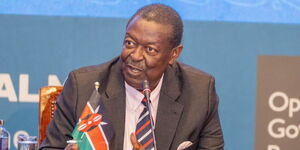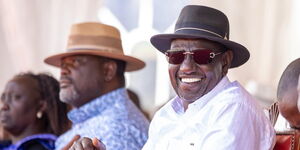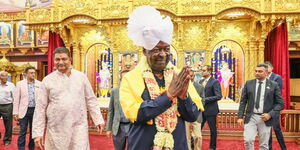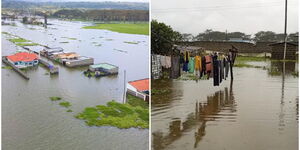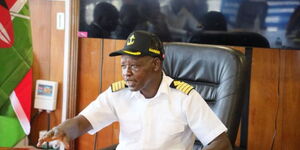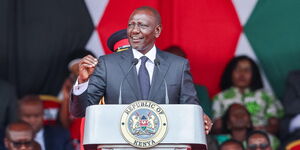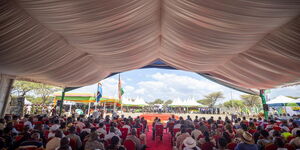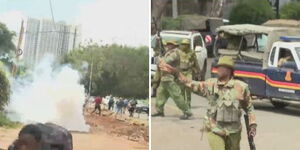Hello and welcome to the Evening Brief Newsletter where it is the season of State Visits and truth-telling.
Situational Awareness: Join our expansive community of 19,500 subscribers and get a breakdown of the day's important stories delivered into your inbox. Join them by subscribing here.
Scratch My Back
Since becoming President in 2022, William Ruto has prioritised his global image with foreign leaders both regionally and worldwide.
This month alone, the Head of State is participating in two state visits, he is hosting his Ugandan neighbour Yoweri Museveni in one and he is poised to be a rear guest to US President Joe Biden next week in another, breaking a 15-year spell and joining only five other Heads of State to enjoy a US State Visit.
Today, Museveni's State Visit to Kenya officially kicked off on high with an event at State House where deals were signed and agreements reinforced.
Oiling Up: First up, the two leaders agreed to extend the crude oil pipeline from Eldoret to Kampala in Uganda after squashing their oil beef and strengthening their ties.
President Ruto explained that the new pipeline would supply the neighbouring country with its fuel needs and essentially resolve the protracted oil importation dispute.
Kenya supplies over 90 per cent of Uganda's fuel while an average of 10 per cent is sourced through Tanzania.
The two nations also signed an agreement paving the way for the Uganda National Oil Company to import petroleum products through the port of Mombasa.
SGR Cross Borders: Ruto also highlighted the extension of the Standard Gauge Railway (SGR) from Naivasha to Malaba, Kampala and DRC, praising it as a key infrastructural project to bridge the gap in terms of trade ties within the region.
"The meeting also emphasized the Importance of extending the SGR not only from Naivasha to Malaba but all the way to Kampala and DRC as an efficient and sustainable Infrastructural artery for the transportation of goods," Ruto stated.
Raila Backed Up: Ruto hailed Museveni for throwing his weight behind Raila Odinga's candidature for the African Union Commission Chairmanship.
“I have expressed to President Museveni and the people of Uganda the appreciation of Kenyans from all walks of life for Uganda's endorsement of the Kenyan candidate for the position of AUC Chairperson and I assured him of our full confidence that Raila will deliver effective leadership at the commission," stated Ruto.
Other Deals: The two countries signed MOUs on cooperation on public service management and development for service delivery and facilitation of the youth to optimise their capabilities and implement Innovative national policies and programmes
- The JMC witnessed the signing of an MOU on cooperation in sports as well as others touching on education, training and scientific research as well as small and medium-sized enterprises sector, and gender equality and women's empowerment.
What Ruto is Saying: "We are confident that these instruments will consolidate our strong relationship and anchor it on a transformative trajectory. As leaders, we are committed to implementing all our obligations in order to reap their full benefits."
Museveni Wish: As the man of the moment, Museveni's rallying call was for the collapse of the East African Community (EAC) government and to replace it with one prosperous version.
Museveni justified that consolidation is essential for the protection and prosperity of the region's populace.
What Museveni is Saying: "If we had formed the East Africa Federation in 1963, many of the problems that we have now would have been avoided," he stated.
"Our agenda is to create one government of East Africa."
"Apart from economic integration for prosperity, we need to address the issue of security. The only way we can do it is through political integration. In the case of East Africa, our main target is one authority, one government for East Africa," he added.
Dissent View: However, scepticism persists regarding the feasibility and motivations behind the federation, with concerns raised over President Museveni's perceived ambition to assume leadership post-retirement.
Museveni's State Visit ends tomorrow.
Rough Ride Ahead
In recent weeks, the Kenya Shilling has stabilised against the dollar at a stable Ksh130 but experts reckon the stability will not last.
A report by Reuters explained that the local currency was projected to weaken due to high demand for the dollar by the fuel retailing companies.
The Switch: According to foreign exchange experts, there was pressure on foreign exchange caused by fuel companies who demanded more Dollars to purchase petroleum from oil-producing countries.
The shilling was also projected to weaken due to the recent gains by the Dollar witnessed in recent weeks that have caused several currencies to drop in value.
Of Note: Dollars are crucial for traders seeking to facilitate trade on the international markets, a major factor that contributed to the high demand for the US currency.
Catch Up Quick: At the onset of President William Ruto's reign, the shilling was continually on an upward trajectory hitting Ksh162 against the Dollar as late as January this year
- At the time, experts had predicted that the shilling would oscillate between a Ksh161.48 yearly low and a Ksh214.72 yearly high in 2024.
- In 2025, experts estimated that the exchange rate will gravitate between Ksh161.48 and Ksh230.30 while in 2026, the figure will rise to between Ksh213.43 and Ksh238.68.
- In 2027, the economists believed that the yearly low range would be Ksh229.57 while the yearly high would be Ksh246.00 while in 2028, the Shilling would rise to between Ksh234.77 and Ksh246.00.
- In 2029, two years into President William Ruto's second term should he win the vote, the Shilling was estimated to exchange at Ksh257.72 (yearly low) and Ksh310.66 (yearly high). In 2030, the yearly high was expected to hit Ksh359.52.
- In February, however, the Shilling started gaining against the Dollar dropping to Ksh130. At the time, Kenya was ranked among the 10 most-performing world currencies.
Here are five other stories we are keeping tabs on today;
- Competition grows stiffer for Raila Odinga's AUC candidacy after a new competitor from Seychelles emerges.
- Preparations for the upcoming UDA grassroots elections for Saturday are complete with 215 voting centers ready.
- NTSA has listed various documentation that is required to facilitate the transfer of vehicles that banks and auctioneers have auctioned for loan and rent arrears.
- KWS cautions residents of Lang'ata in Nairobi, about three roaming lions in the area.
- Kenya Met Warns Kenyans over heavy rainfall in several regions of the country including Nairobi.
If you enjoyed this newsletter, share it with a friend.
This newsletter was written by Derrick Kubasu and edited by Brian Muuo.
Washington Mito contributed to the content.
Graphics prepared by Sylvia Kalulu.

